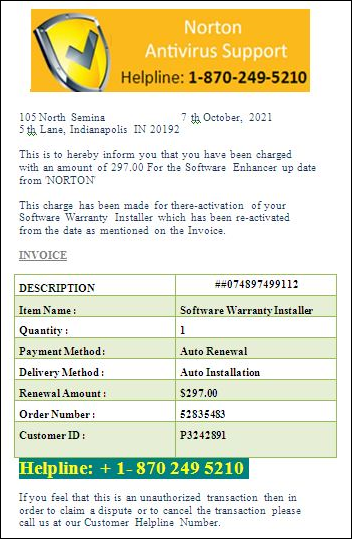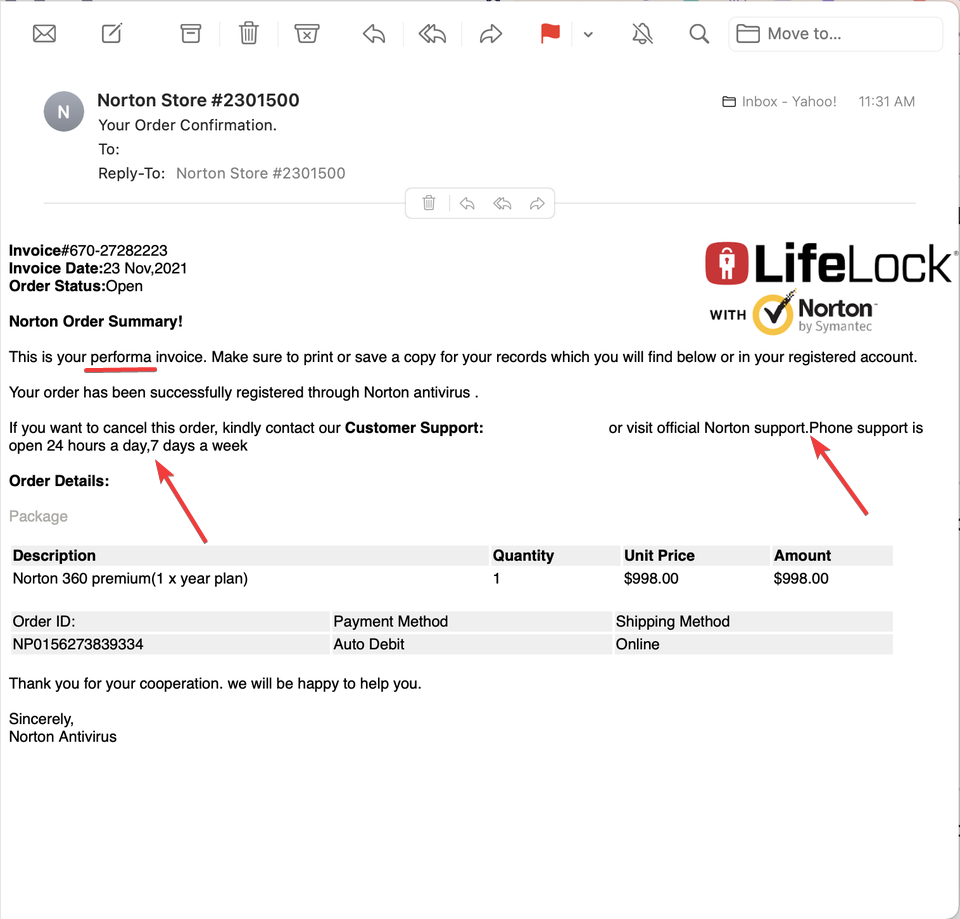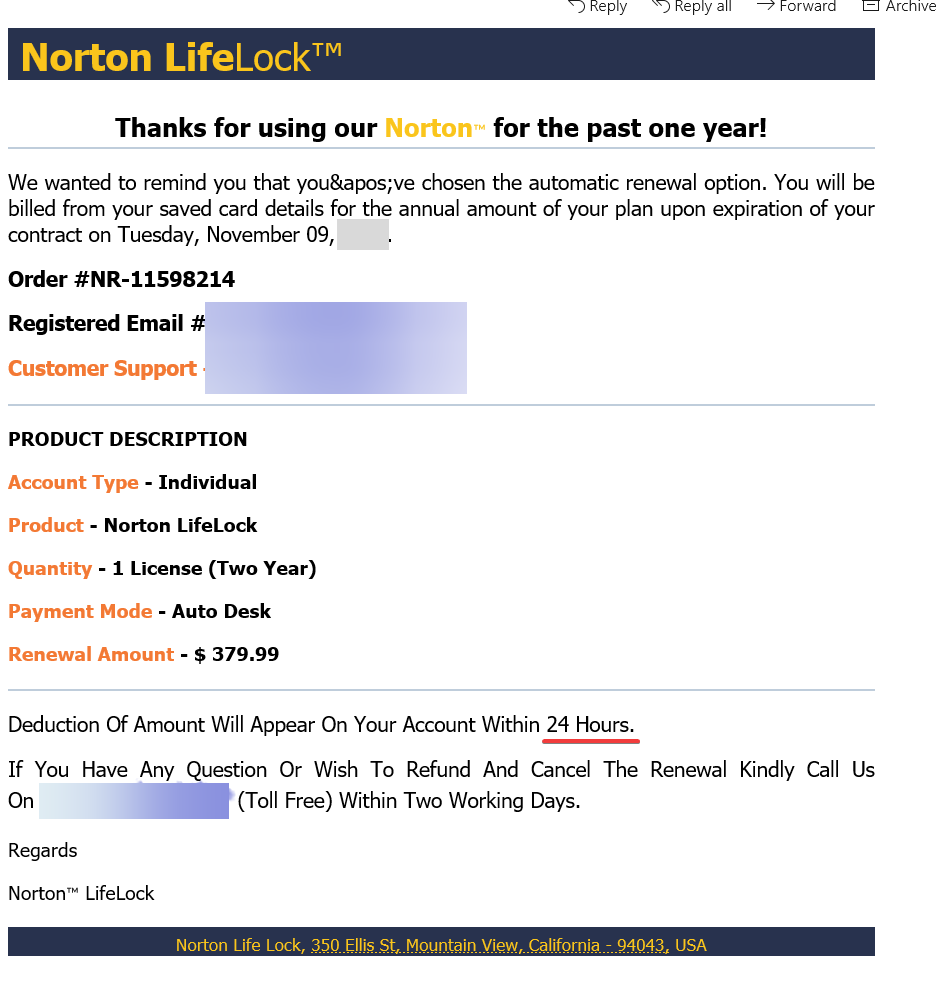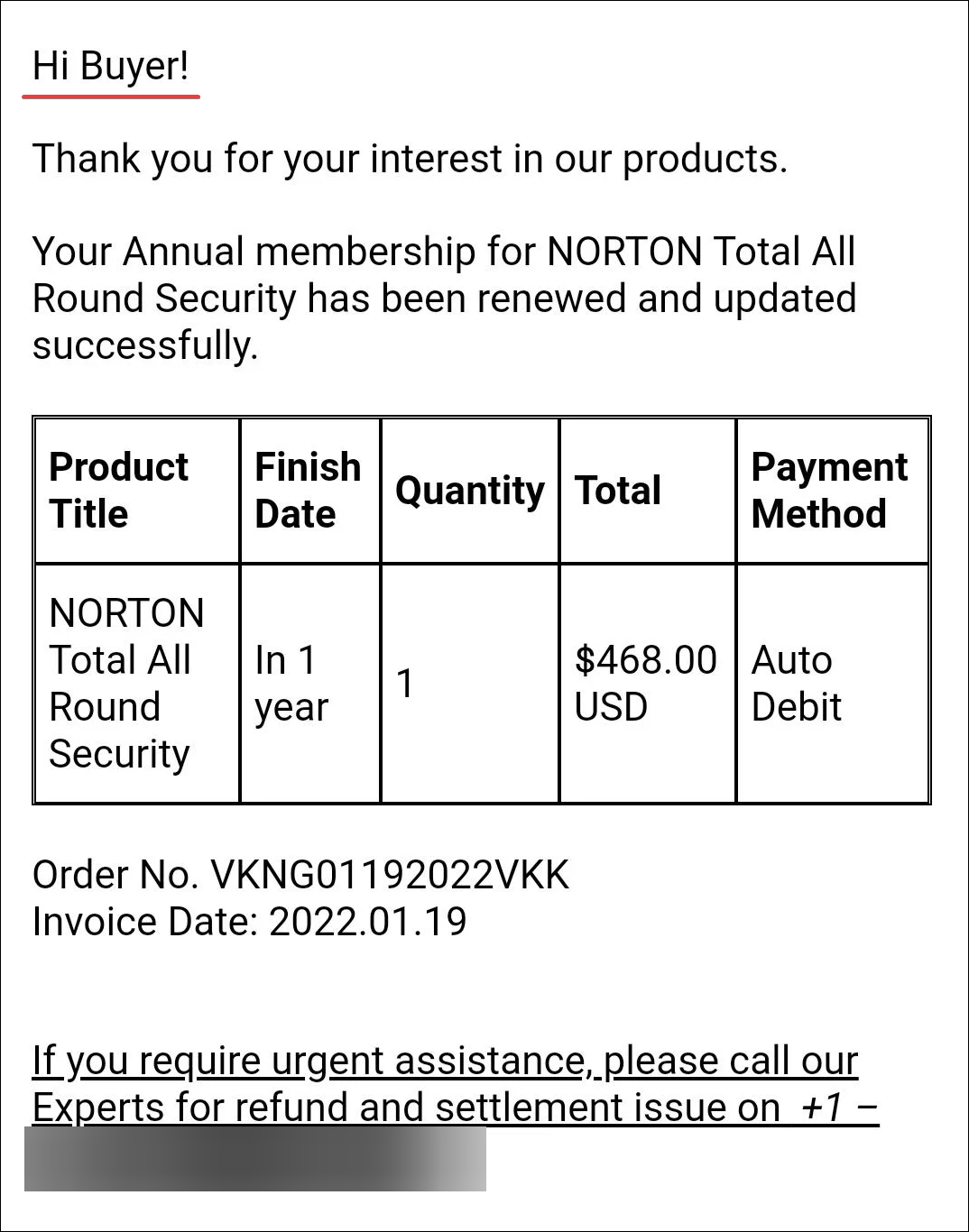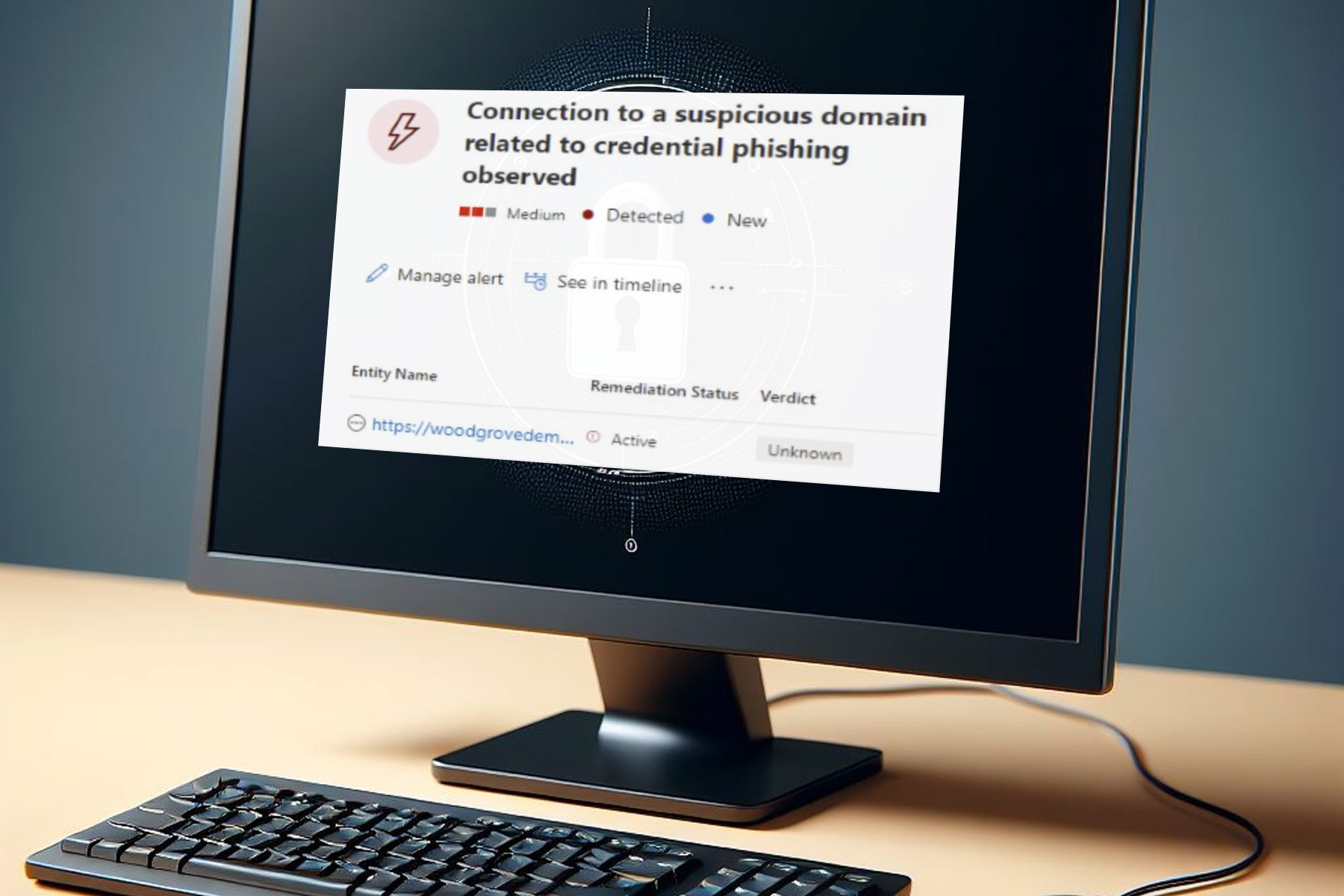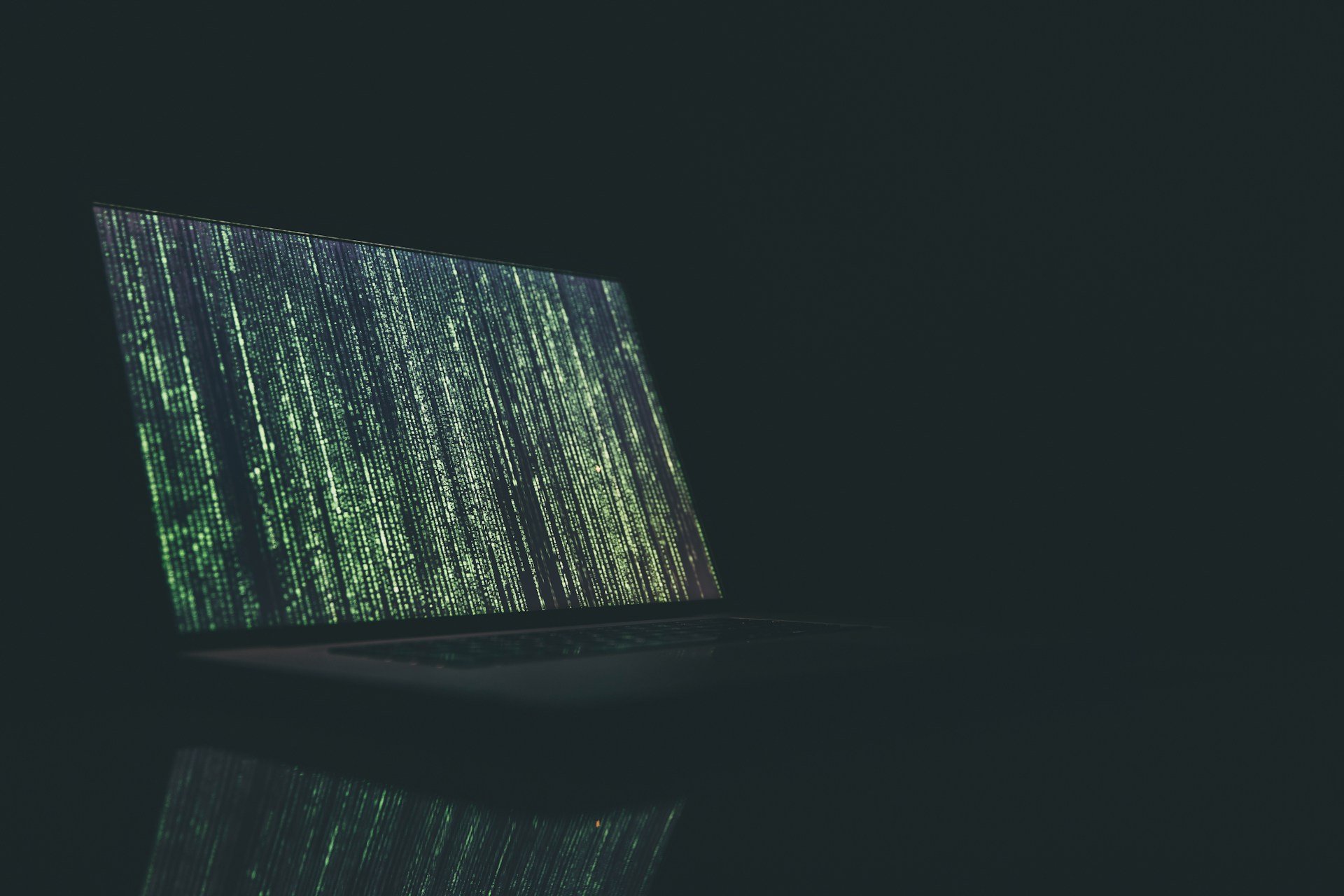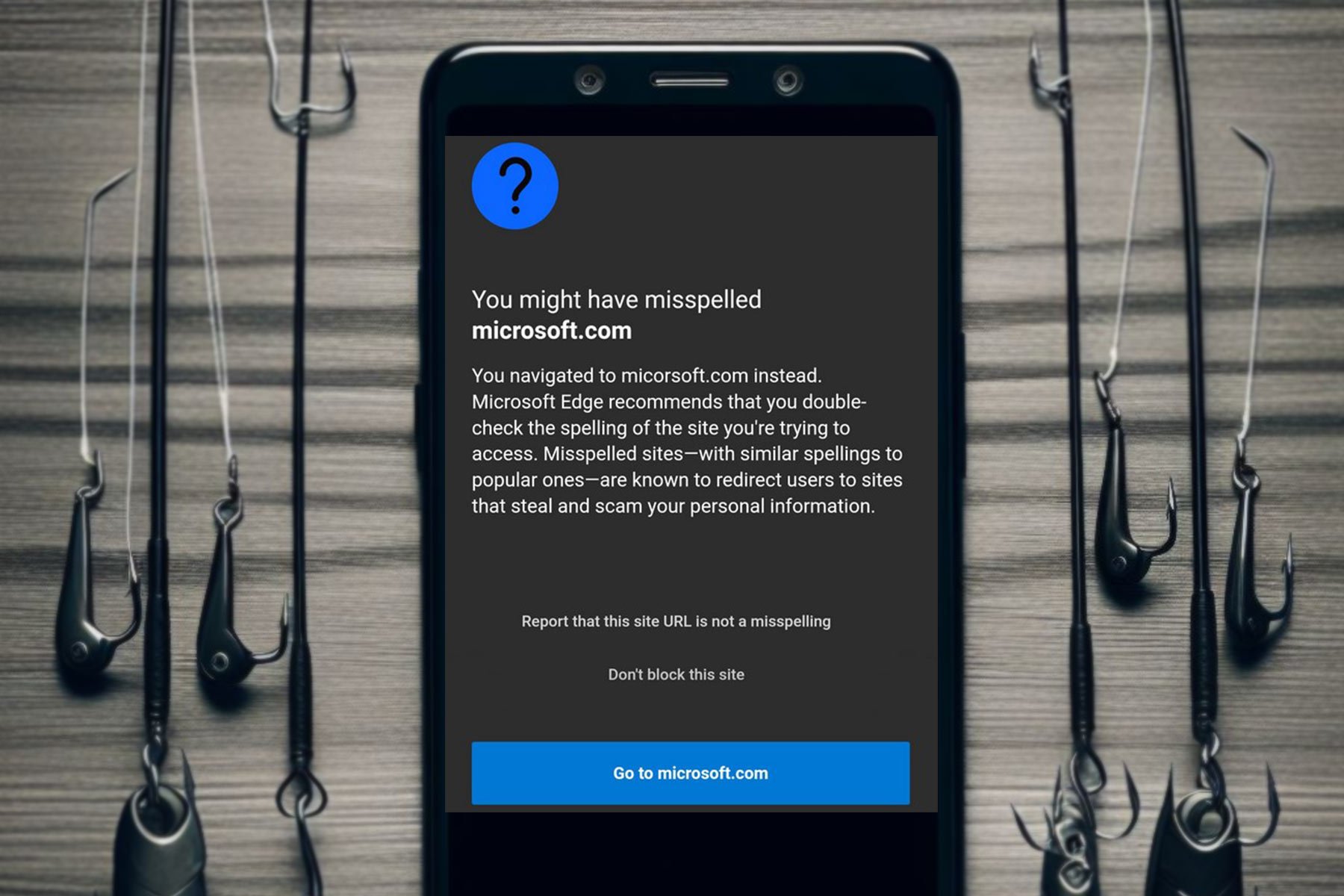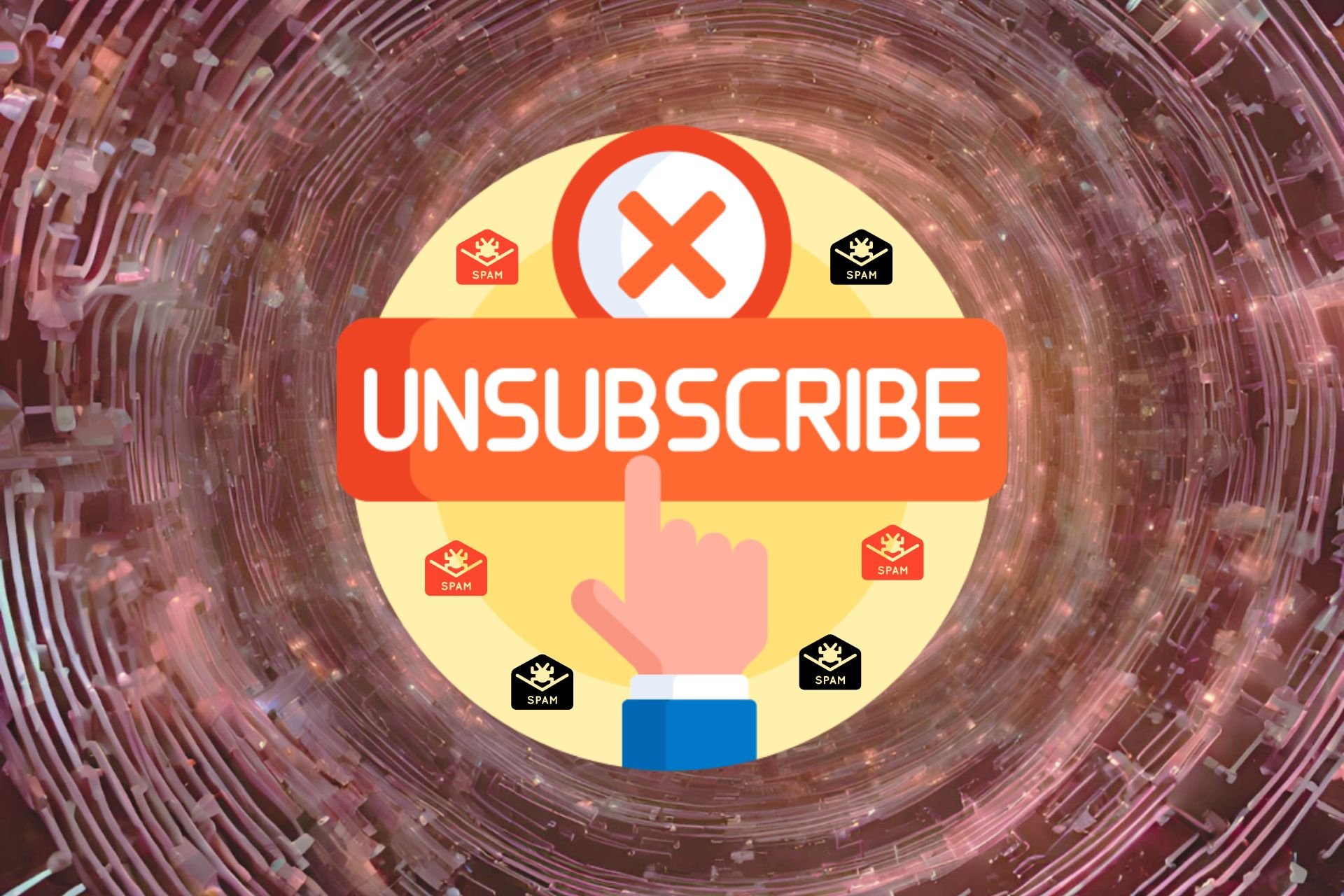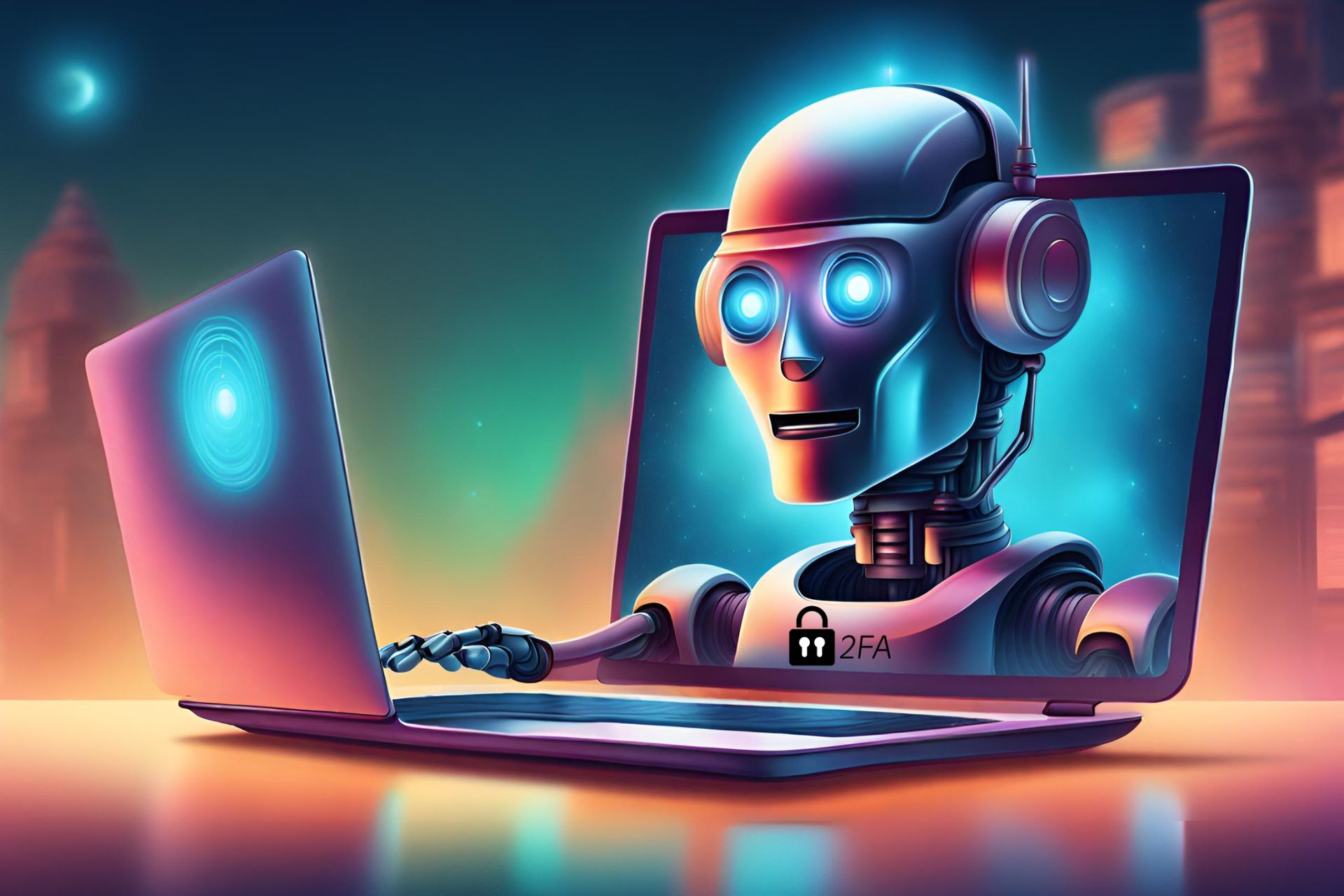7 Tips to Spot Undetected Norton 360 Scam Email
By using these tips, you can consider yourself immune to scammers
8 min. read
Updated on
Read our disclosure page to find out how can you help Windows Report sustain the editorial team Read more
Key notes
- Email scams are common, and recently, Norton 360 users fell victim to them.
- Scammers sent out emails to users claiming that their subscription had expired and they would be charged unless the user called the provided contact number.
- Through these email scams, users save reported losing both money and critical information, therefore you should know how to spot them.
- Also, learn if scammers can find out whether you opened an email, and the other information shared.

Norton antivirus is one of the most trusted options in the market and offers a bunch of features along with regular scanning for malware and virus. But, several of its users (and some non-users too) reported receiving Norton 360 scam emails.
Phishing has long been a problem that all three, users, companies, and authorities are facing. And, it poses a serious risk since people risk losing their money or might end up sharing sensitive information.
But, how do you spot a scam email? What are the various signs? Does Norton 360 send promotional emails or are these scams? Can just opening a scam email bring any trouble? These are some of the questions you may have.
We will take all these up individually in the following sections to help you spot a Norton protection scam email and stay safe.
What is the Norton 360 email scam?
The Norton 360 email scam is a part of elaborate phishing fraud that’s been going around for some time now. Here, you receive an unsuspecting email claiming that your Norton 360 subscription has automatically been renewed, or that your recent Norton 360 purchase will be activated soon.
This could be related to any of the products offered by Norton. For instance, Norton 360 Standard, Norton 360 Deluxe, Norton 360 Deluxe 3 devices, Norton 360 Premium, or Norton 360 for Gamers.
Such emails are meant to create panic. For instance, contact to cancel the purchase right away if you don’t want to be charged. Or, that you have already been charged and can get in touch with the helpline to request a refund.
As expected, at the end of the Norton 360 scam email is a phone number for the support helpline to contact, in case you want a refund. Users who called this number were asked to share banking data or credit card details in order to deposit the refund in their accounts.
As soon as they provided the details, a certain sum of money was immediately deducted. In such cases, getting your money back is the real challenge, so it’s best that you be wary initially and not fall for such scams.
In some cases, there were links and attachments in these emails, which if clicked on or downloaded, can infect the device. This is one of the common modus operandi for scammers. Once the malware is loaded into the system, it can access the files or track your activity.
There are several aspects that can help you spot a Norton 360 scam email. Some pointed out under a section from Reddit regarding the Norton 360 scam email, and others from different past scam experiences. Read the following section to find out.
Can I trust Norton 360?
Norton AntiVirus is not only safe to use, but it also has a lengthy history of providing flawless or almost perfect results when detecting viruses.
During the most recent period of testing conducted by an independent AV company (April 2022), it was able to get a maximum score of 6 points in each of the categories of usability, performance, and protection.
How do I spot a Norton 360 scam email?
1. Verify the sender’s address
The first sign to look out for in case you receive spam emails from Norton and McAfee is the sender’s address. Oftentimes, you would find these to be registered on Gmail, Yahoo, or other email services. And a company like Norton or any other major corporation would always use its domain.
In some cases, scammers also use a slight variation of Norton’s domain. They could add a letter or remove one, such that it isn’t easily noticeable. Norton has made a list of all the registered domains, so you can verify if the email is actually from Norton or a scam.
2. Look for grammatical or spelling errors
When an email is sent from an official source, you wouldn’t find any grammatical errors or spelling mistakes since the content goes through several checks before being sent out to users.
On the other hand, scam emails are generally sent out without any checks. Scammers don’t bother double-checking the content, and as a result, there could be a few typos. Take the below case of the Norton 360 scam email for instance:
Though it could look like a genuine one, the word Proforma (a type of invoice) has been misspelled as Performa. Other than that, there is no spacing after a comma or full stop in some places. So, have a keen eye for such stuff, otherwise, you won’t be able to spot a scam email.
3. Check the graphics or logo
Most of the phishing emails from Norton don’t have proper graphics or use the incorrect logo for Norton 360. The logo might either be hazy, a part of it missing, or it could be an outdated one.
You will have to head to Norton’s website to verify if the logo matches the one officially used. If you find any inconsistencies there, it’s most likely a Norton 360 scam email.
In this case, you should not share any personal information, click on any links, download attachments, or establish contact through the details provided.
4. Email tries to create an urgency
Scam emails work through a very simple technique, highlighting an emergency to manufacture a sense of urgency so that the person is unable to think clearly or realize that they are being scammed. To do this, scammers generally provide a small timeframe in the Norton 360 scam email, as is the case below:
When you see that the amount will be deducted in 24 hours or as the case may be, you suddenly panic and call the number provided there. Norton or any other large corporation wouldn’t use such antics, and this is an easy way to spot a scam or phishing email.
5. Includes suspicious-looking links
Always remember to not click on suspicious links in an email because these might contain files that could harm the computer, and you would end up losing critical data. And, a scam email might have one of these.
It could either ask you to download software or redirect you to another webpage in order to complete the payment. NEVER, click on these!
You can either hover the cursor over the link to preview it or copy it to a word processor. If there’s something suspicious about the link, contact Norton through official channels to verify if it’s a legit email.
6. Look how they address you
Another critical aspect that often gives away if it’s a Norton 360 scam email is the way it addresses the recipient. Corporations generally don’t use highly informal language, so that’s one way to identify.
Also, since the company already has your personal information, it would most likely use it to address you. If the email uses words like Dear Buyer, it’s a sign of a scam.
7. Offers huge discounts on products
Another way to scam users is by offering huge discounts on products. In the case of Norton 360, the scam email would highlight that your computer is at risk and that the antivirus is available at an unreasonably low price.
And most likely, it would ask you to make payments through services such as Western Union or use payment platforms like PayPal, Zelle, or CashApp. Norton has confirmed that it doesn’t accept payments through these platforms.
How do I report a phishing email to Norton?
Users can report email scams through Norton Support. So, if you believe to have received one, you now know where to send the fake Norton emails.
Apart from informing you whether it’s indeed a Norton 360 scam email after analysis, they will also take the necessary action.
1. Launch your web browser.
2. Navigate to your email address’s inbox.
3. Right-click on the email that you believe is a scam, and select Forward as Attachment from the menu.

4. Next, paste [email protected] in the text field meant for entering the details of the recipient.

5. In case you have contacted the support team earlier regarding this, make sure to enter the Case Number provided in the Subject field. If you haven’t, send the email without one.
 NOTE
NOTE
Can spammers tell if I open an email?
Yes, spammers can find if and when you open an email. Because, when you do, the email service will download graphics from the servers chosen by the sender. As soon as that happens, it will become clear that the email has been opened.
To avoid that, users can disable the automatic download of images. This way, the sender cannot find out if you have opened the email.
Other than identifying that you have opened the email, scammers can also find out your location, IP address, the device used to view the email, OS, the browser used, and the screen size, amongst other aspects. So, think twice before opening a Norton 360 scam email!
Can I get hacked by opening an email?
No, that is not possible! Until some time ago, scammers could infect your computer or hack into it, but it’s simply not the case now. With recent changes in the way contents of the email are now fetched, you can open any email, though remember that some data will still be shared.
But, if you click on links on download attachments added to the scam email, there’s a good chance that your account or computer might get hacked.
That’s all there’s about Norton 360 scam emails, the ways to spot one, and how to be safe, in general, on the web.
Also, if you believe that such emails are only sent by scammers under the disguise of Norton, read about the McAfee email scams that work on similar lines.
Besides, if you want to stop Norton spam emails, do not hesitate to check the best spam filters that you can start using today.
If you’re worried by unknown files and threats, you also have a guide that answers what is Windoc.exe that can help you with that.
If you received any such emails, tell us how you identified that it was a scam, in the comments section.

